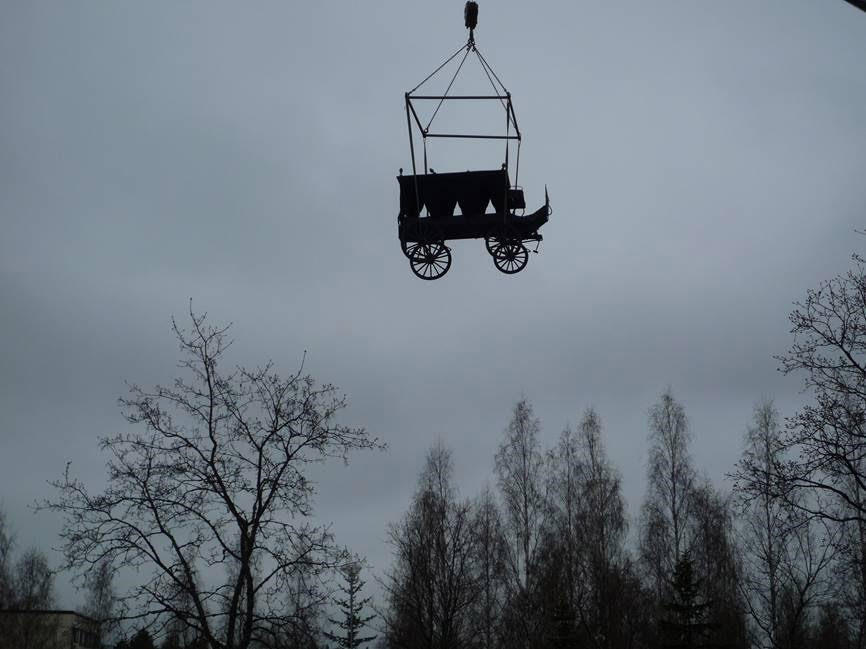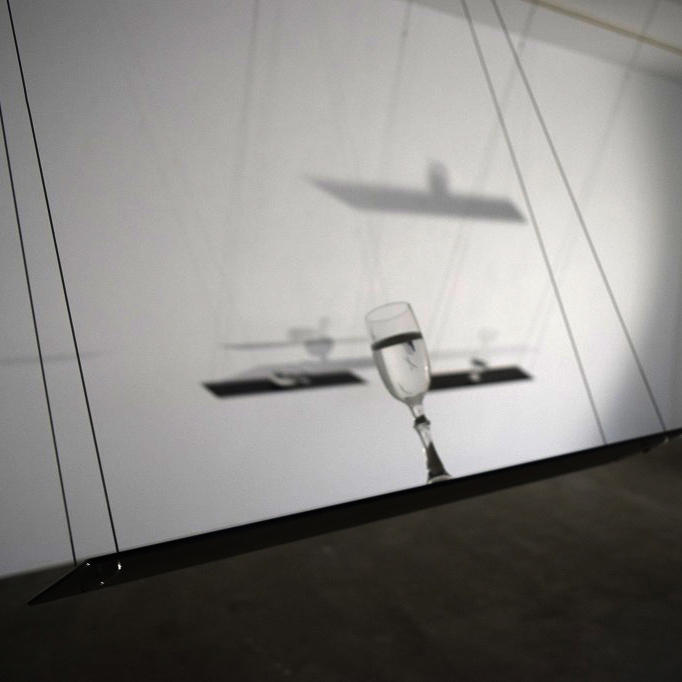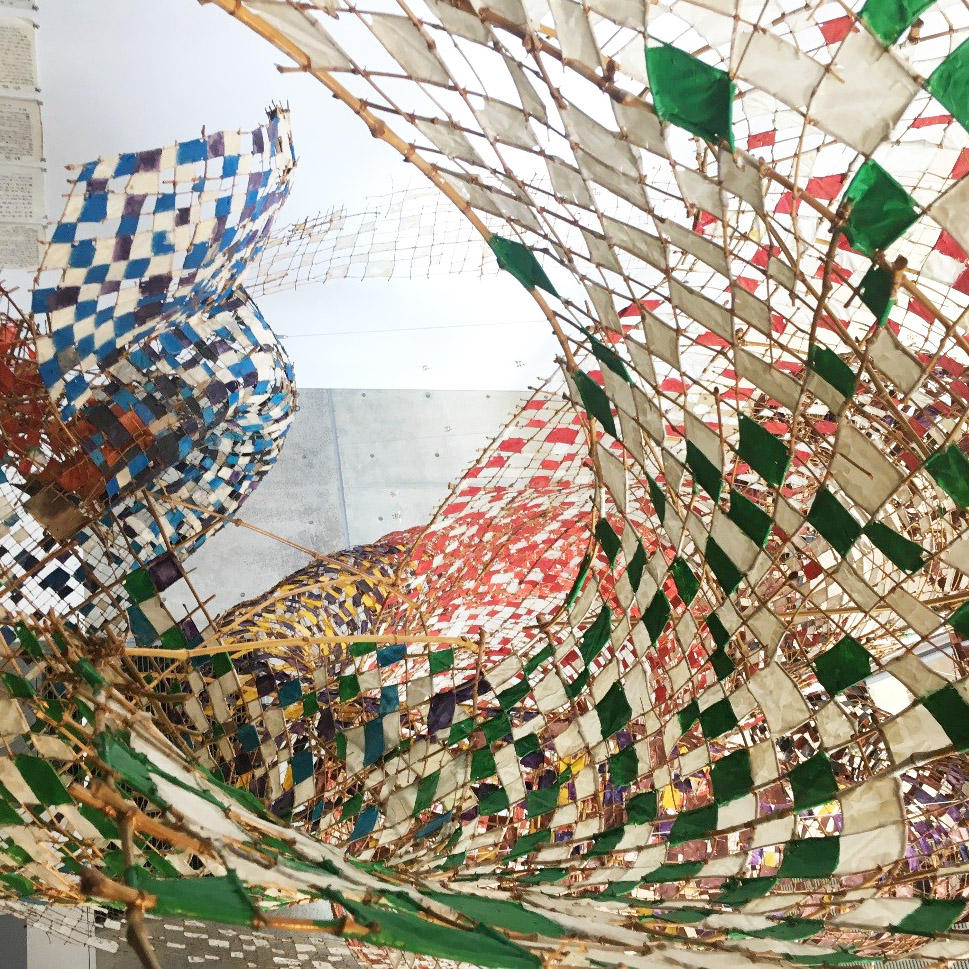Exhibition
Maaria WIRKKALA -Beyond this point
2017. Jun. 9 (Fri) - Jul. 9 (Sun)
Art Front Gallery is pleased to announce solo exhibition of Maaria WIRKKALA .
| Date | 2017. Jun. 9 (Fri) - Jul. 9 (Sun) |
|---|---|
| Hours | 11:00-19:00(Monday closed) |
| Reception | Fri. Jun 9th 18:00 - 20:00 |
Maaria Wirkkala’s style is very simple. By selecting objects from what we see around us, and combining them and rephrasing them into non-daily situations, she generates new meanings. The original objects are her creative starting points. One example is a work exhibited at Yokohama Triennale 2005. Animal figures march on a wire suspended between warehouse roofs. The warehouse and the seaside location, must have led viewers to make an association with notions of movement, immigration, or perhaps Noah’s Ark. At the Echigo-Tsumari Art Triennale 2003, Maaria’s starting point was to find in Yomogihira community something local repeated and something global repeated.(local hat / Sony satellite antenna ) Wirkkala installed objects consisting of local hats with lights at the entrances to all the houses in a mountain village. At night the devices looked like parabolic antennas giving the impression of the village communicating with the wide world.
Maaria Wirkkala’s works are both theatrical and poetic. In order to appreciate this, viewers need to read them actively, from visual information provided. The core of the works lies between the lines, unarticulated by language. But they are not esoteric, in the manner of much contemporary art. The artist’s personal interpretation of her work comes through in her selection of the individual materials used. But the stories behind the elements are not forced on viewers. Each piece is like an individual player with a distinct and atmospheric character, as if they were actors on the same stage, but behaving freely. The space of the installation quietly transmits the poetic emotion as a whole. Wirkkala’s work goes beyond the intentions of the artist alone.
This year, there are many chances to Wirkkala’s works. Some months ago, she exhibited a work in the snow in Tsumari. Since the spring, the Echigo-Tsumari Satoyama Museum of Contemporary Art, has displayed the above work with animals. There will soon be a new installation at the Japan Alps Art Festival. Since 2003, I have been able to witness the artist’s creative process on-site more than once. I always wonder how this Scandinavian can, without apparent difficulty, communicate our Japanese mentality. It is surely because her certain creative sensibility is different from the modern Western notion of artistic individuality as the basis for manifestation of creativity. Recently, ever more artists are dealing with issues of borderless cultural backgrounds. It is true that contemporary art can be difficult to understand if viewers lack knowledge to interpret it, or are unaware of the social and cultural backgrounds behind the work. But Maaria Wirkkala may be suggesting a possible direction by which art can overcome this.
Maaria Wirkkala’s works are both theatrical and poetic. In order to appreciate this, viewers need to read them actively, from visual information provided. The core of the works lies between the lines, unarticulated by language. But they are not esoteric, in the manner of much contemporary art. The artist’s personal interpretation of her work comes through in her selection of the individual materials used. But the stories behind the elements are not forced on viewers. Each piece is like an individual player with a distinct and atmospheric character, as if they were actors on the same stage, but behaving freely. The space of the installation quietly transmits the poetic emotion as a whole. Wirkkala’s work goes beyond the intentions of the artist alone.
This year, there are many chances to Wirkkala’s works. Some months ago, she exhibited a work in the snow in Tsumari. Since the spring, the Echigo-Tsumari Satoyama Museum of Contemporary Art, has displayed the above work with animals. There will soon be a new installation at the Japan Alps Art Festival. Since 2003, I have been able to witness the artist’s creative process on-site more than once. I always wonder how this Scandinavian can, without apparent difficulty, communicate our Japanese mentality. It is surely because her certain creative sensibility is different from the modern Western notion of artistic individuality as the basis for manifestation of creativity. Recently, ever more artists are dealing with issues of borderless cultural backgrounds. It is true that contemporary art can be difficult to understand if viewers lack knowledge to interpret it, or are unaware of the social and cultural backgrounds behind the work. But Maaria Wirkkala may be suggesting a possible direction by which art can overcome this.











